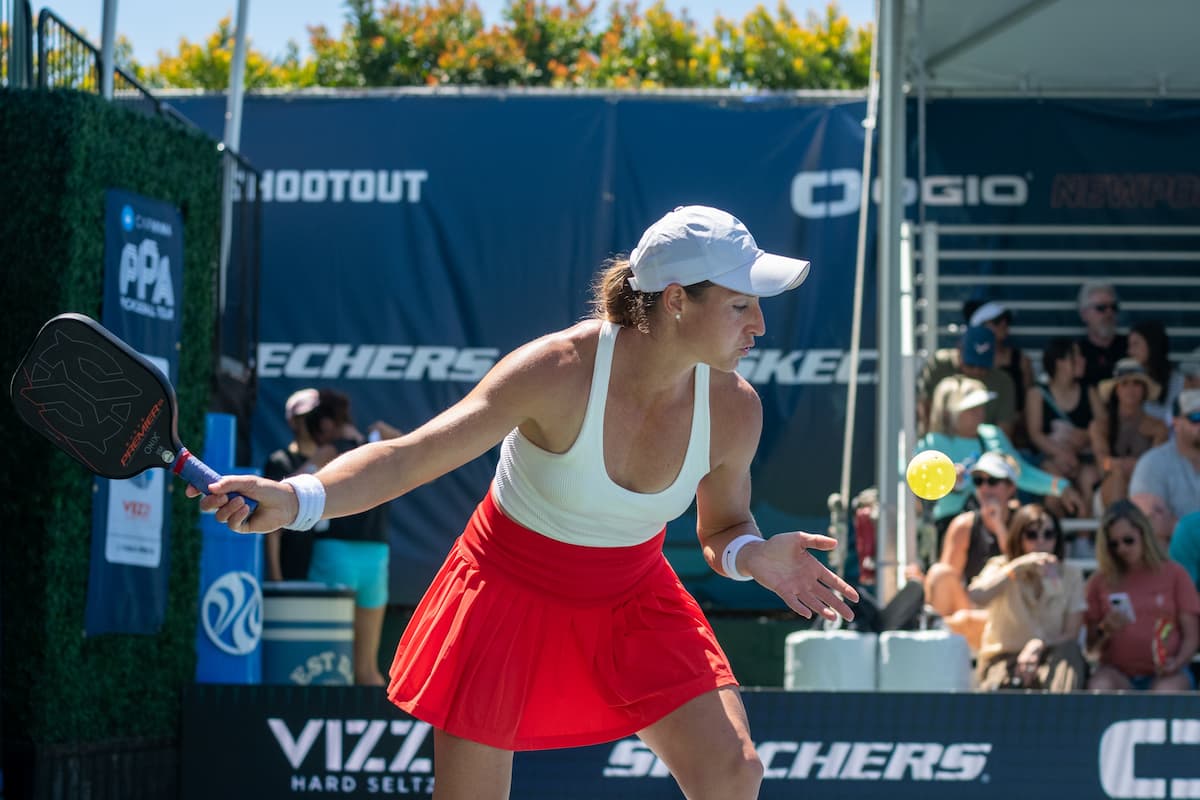In the exciting sport of pickleball, having a strong and reliable serve is crucial to achieving success on the court. Serving not only starts each point but also sets the tone for the rest of the rally.
With that in mind, understanding the rules for serving in pickleball will help improve your performance and increase your tactical advantage during games.
Serve Fundamentals: Rules to Get Started
Before diving into specific techniques and strategies for serving, let’s review some core rules governing the serve in pickleball:
- Underhand Serve: The server must make contact with the ball below their waist level using an underhand motion. In other words, the paddle should be moving in an upward arc at the time of contact.
- Two Feet behind the Baseline: With both feet positioned behind the baseline, the server must remain within the confines of their respective serving area- between the sideline and the centerline.
- One Contact: Each player gets one opportunity per serve to strike the ball cleanly; any double hits or carrying of the ball are considered faults.
- Crosscourt Service: After initiating the serve, the ball must land diagonally across the court in the opponent’s service box. If it fails to do so, this results in a fault.
- No-volley Zone Rule (Kitchen): The serve must avoid landing in the no-volley zone, which measures 7 feet from each side of the net. Any serves that land in this area are deemed faults as well.
Advanced Serving Techniques to Improve Your Game
Having a delightful serve goes beyond merely adhering to the rules. Players can continuously evolve and refine their serving skills, incorporating advanced techniques that keep opponents guessing and off-balance.
Changing up the Speed and Placement of Your Serve
One way to catch your opponent off guard is by varying the speed and placement of your serves. Serving with different speeds – from fast power serves to slow and spinny serves – forces the receiver to continually adjust their footwork and positioning.
Likewise, mixing up where you target your serves- deep into the corner or short in the middle of the court – adds an element of surprise that keeps your opponent on their toes.
Honing Consistency
In pickleball, a successful serve is a consistent one. The more reliable your serve, the fewer unforced errors you’ll make, thereby maximizing your chances of winning points.
Spend time practicing various serves in different conditions to build a repertoire that works for you come game-time. Make sure to hit the proper contact point consistently to achieve a stable serve.
Adding Spin to Your Serve
Applying spin to your serve can be a simple yet effective tactic, especially during competitive matches. By putting either topspin or backspin on the ball, it can cause the ball to bounce unpredictably, making it harder for your opponent to return.
Keep in mind when adding spin that you still need to follow the underhand rule and remain below waist level at the moment of contact.
The Drop Serve: An Alternative Style
The drop serve is a newly-approved technique incorporated into the Official Pickleball Rulebook in 2021 as a permanent rule change.
It gives players the option to drop the ball before initiating an underhand serve instead of tossing it.
This new rule allows players to generate more spin on the ball and reduce pre-serve violations such as foot faults or illegal drop-serving methods.
Team Play: Serving Rotation Rules
Pickleball is often played in doubles format, which means understanding serving rotation rules within a team is vital. These rules help maintain a fair game flow by determining who serves during a match:
- Starting Server: At the beginning of each game, the starting server will serve from the right side of the court. Their partner will be positioned at the other end of the court and can switch sides after winning a point.
- Partner Serve: If the first-serving team wins the point, the server’s partner becomes the new server for the next rally, which starts from the opposite serving area.
- Serving Side Change: Teams change their serving sides (right-left) each time they score a point, ensuring that the player keeps serving from alternate serving areas.
- Losing Service: Once a fault occurs, the serving side loses its serve, and the opponents take over the serving responsibilities. The receivers then become the new servers.
- Side-outs: In a doubles match, both partners get one chance to serve per rotation – once the second-server commits a fault, a “side-out” is called, and service switches to the opposing team.
Mastering the Art of Serving in Pickleball
Overall, developing an effective serve in pickleball encompasses understanding the fundamental rules of serving, practicing various techniques to remain unpredictable, adapting your style to doubles play if required, and continually refining your skills to stay ahead of your competition.
By incorporating these elements into your game and investing time in mastering the art of serving, you will soon find yourself dominating your opponents on the pickleball court.

